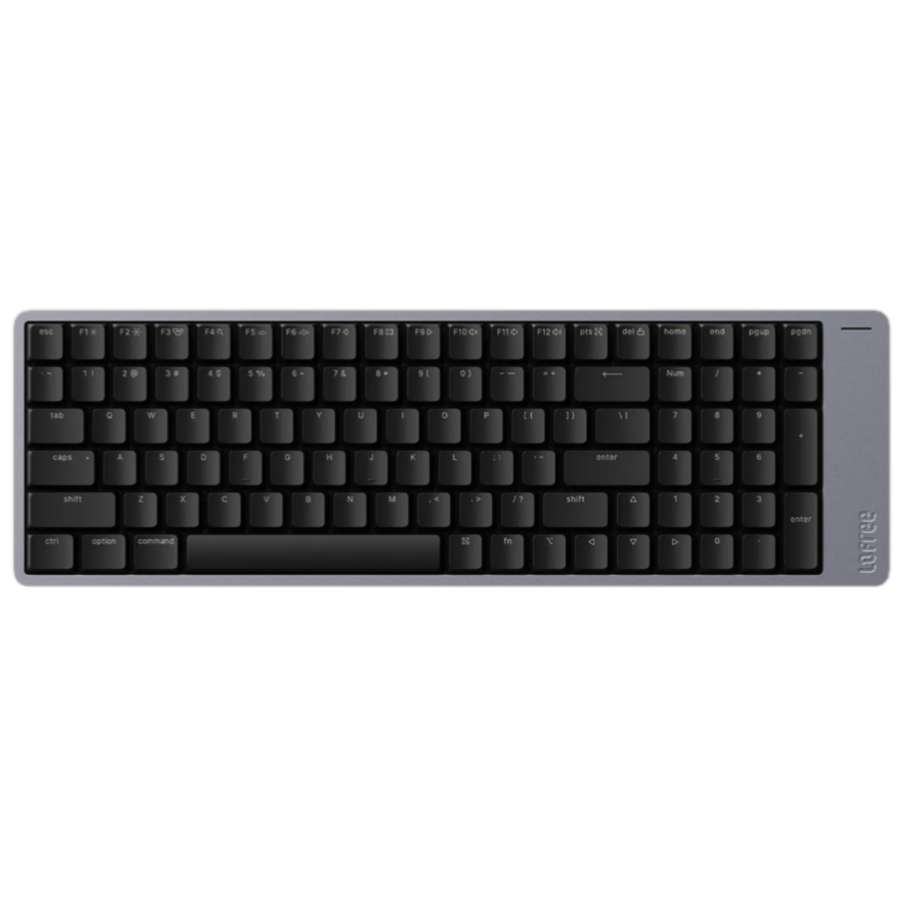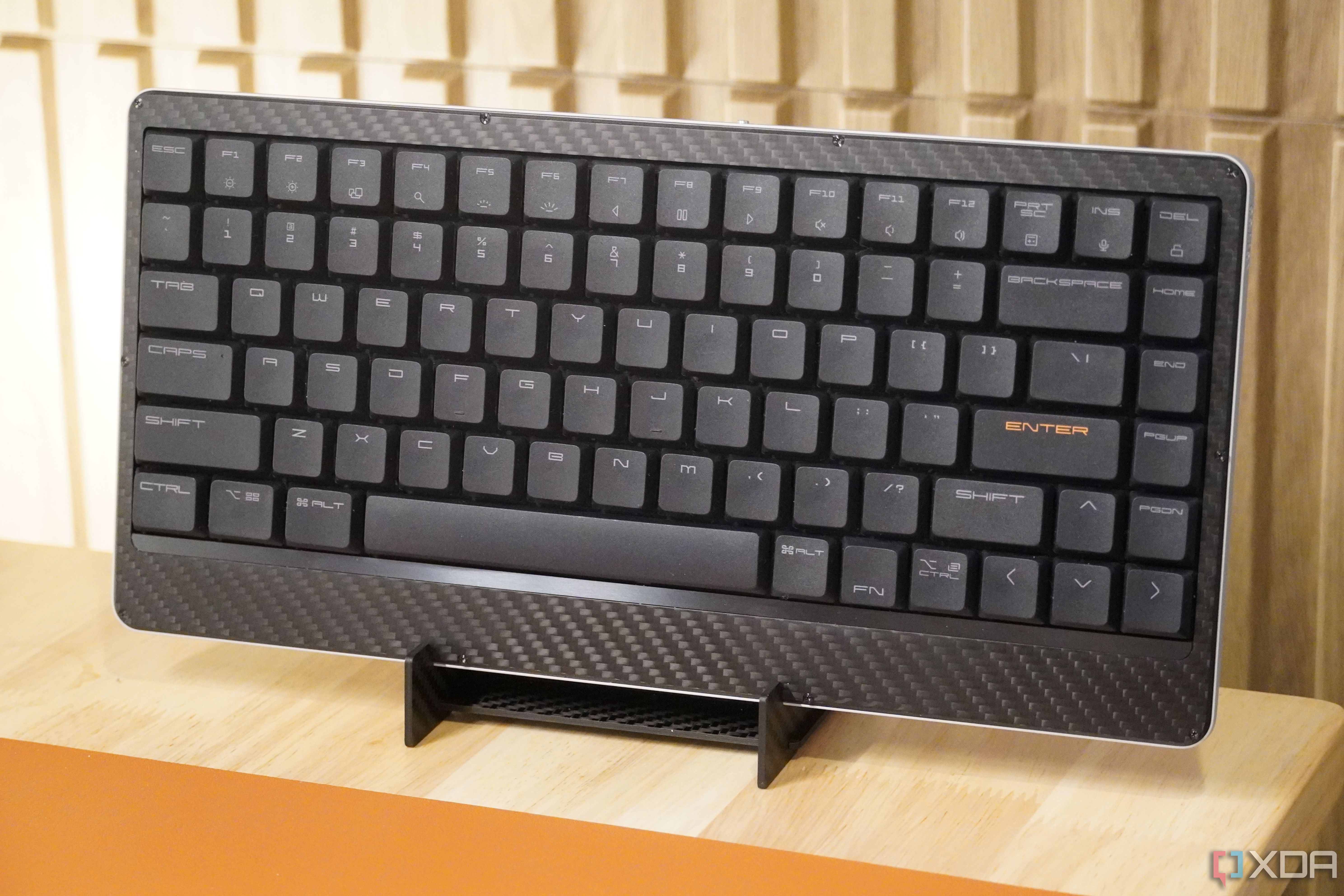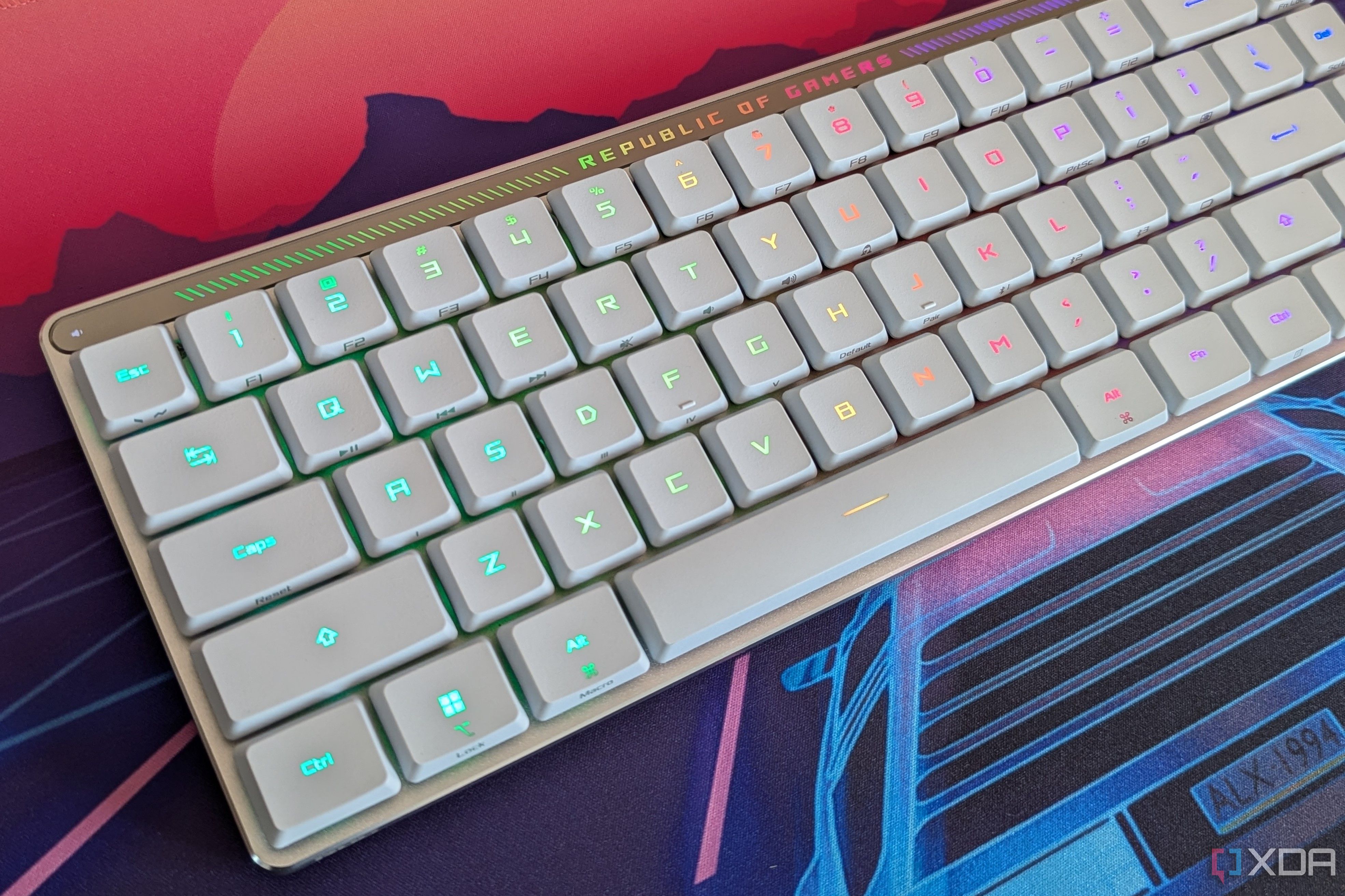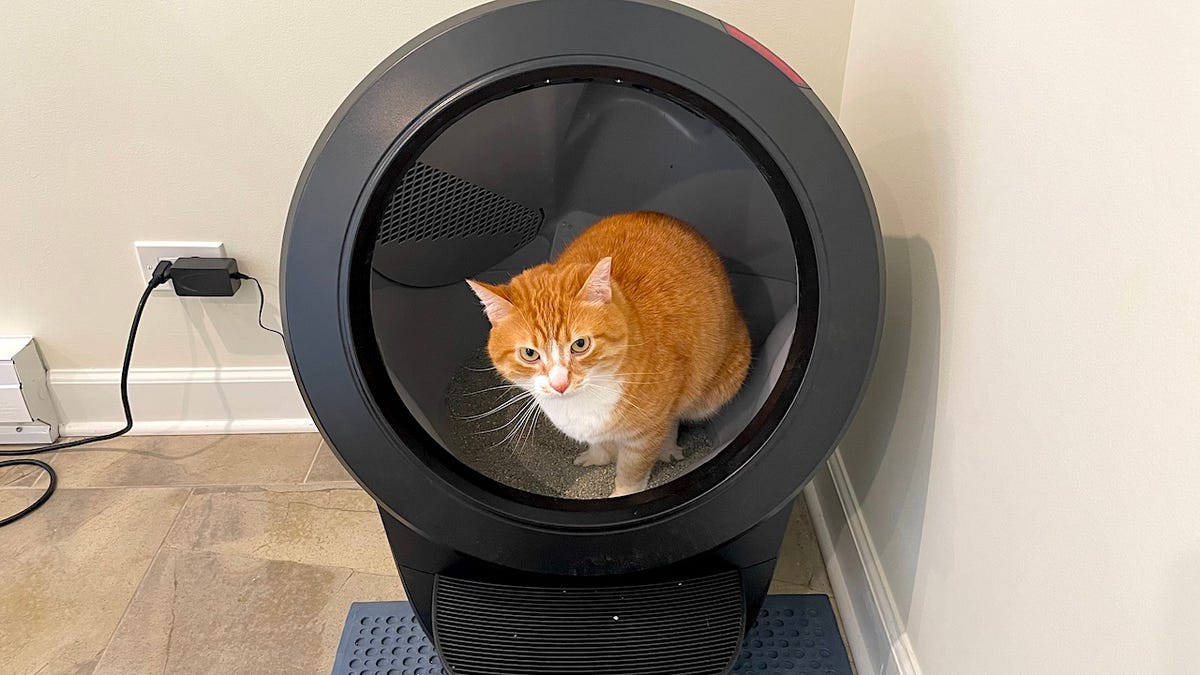The Lofree Flow 2 is a more premium version of the company's original Flow keyboard. This low-profile offering switches to full-body aluminum construction and introduces multiple quality-of-life improvements across the "board." You can also choose from three different layouts, depending on your liking for missing keys. That said, Lofree's decision to add a touch bar with limited functionality and the restrictions on choosing color and switch options won't sit well with many users. And its post-launch price is a little on the higher side, considering Lofree's own Flow and Flow Lite are still available.
About this review: Lofree sent me the Lofree Flow2 for this review, but did not have any input into its contents.

Form factor 68/84/100 keys
Switch options Tactile (Gray variant) and Linear/Silent Linear (Silver variant)
Lofree's follow-up to the original Flow is a more premium and well-rounded offering that excels in typing comfort and customization. However, some questionable design choices and limited configurations combined with a steep price hurt its value proposition against its competitors, including those from Lofree itself.
Pros & Cons
- Premium design and materials
- Fast and comfortable typing
- VIA customization
- Three different layouts and switch options
- Imprecise touch bar
- Limited configurations
- Too pricey after pre-launch
Pricing and availability
The Lofree Flow 2 is set to launch on Kickstarter on July 10th, but you can reserve a special price before that by paying a dollar on Lofree's website. This will essentially unlock a $100 discount on any of the three layouts you choose to go with. Each of the 68, 84, and 100-key layouts comes in both silver and gray variants, but the switch options are limited by the colors. The variant I'm reviewing here is the gray 100-key model with Pulse (tactile) switches, and it costs $109 if you register for the pre-launch, VIP price ($209 when it launches on Kickstarter).
Form factor 68/84/100 keys
Switch options Tactile (Gray variant) and Linear/Silent Linear (Silver variant)
Colorways Gray with black keycaps and Silver with white keycaps
Backlight Yes (White only)
Construction CNC unibody aluminum
Dampening Yes
Keycaps PBT double-shot
Supported operating systems Windows, Mac
Hot-swappable Yes
Battery capacity 3000mAh
Connectivity 2.4GHz, Bluetooth, Wired
Typing angle 0° and 5°
Software customizability VIA
Dimensions 400x127x21mm
Weight 885g
Number of Keys 100
Num Pad Yes
Features Touch bar for volume/screen brightness
Included switches POM Pulse (tactile)
What I loved about the Lofree Flow 2
It's a design-lover's dream
The moment I unboxed the Lofree Flow 2, I was struck by its sheer heft and sleek construction. The smooth aluminum case feels cool to the touch, and the entire design language is bound to speak to your esthetic side. Compared to the Flow, this is undoubtedly a more premium offering. The gray unibody with black keycaps is obviously reminiscent of Apple's Magic keyboard, and so is the other variant with a silver body and white keycaps. The default Mac keycaps, namely "option" and "command", can be replaced by "win" and "alt" keycaps provided in the box.
The smooth aluminum case feels cool to the touch, and the entire design language is bound to speak to your esthetic side.
The initial connection was seamless — I flicked the onboard toggle to the 2.4GHz wireless setting, plugged in the dongle, entered the 2.4GHz mode, and I was all set. I'll admit I wasn't enamored with the typing experience at first, since the board felt too stiff compared to other low-profile keyboards I've used. The Flow 2 has some degree of internal foam, but it's not a gasket mount like in the previous iteration. Over the next few days, however, I grew to appreciate the firm feel of the Flow 2 — my typing speed returned, and I made far fewer typos. The kickstands offer a decent typing angle, but I still felt the need for my wristrest, considering the height of the keyboard.
I grew to appreciate the firm feel of the Flow 2 — my typing speed returned, and I made far fewer typos.
These new POM switches do seem to be of higher quality than those on the Flow, but overall, most people won't notice the difference. The typing sound is nothing extraordinary, but I was glad I didn't find any distracting pings. The north-facing LEDs and superior light diffusion on the PBT double-shot keycaps are certainly noticeable, though. I didn't use the numpad, as usual, but those who can't do without it have the option to pick the 100-key variant.
Another great addition for productivity users is the VIA support.
As for the battery life, I only got 3 to 4 days of usage after a full charge, but I won't dock points for it since this heavy keyboard is not meant to be portable, and you can quickly plug in the provided cable when you see the LED bar flashing red. Another great addition for productivity users is the VIA support. You can remap keys, customize layers, and program macros to make the keyboard truly your own. I don't mess around with remapping, but I can definitely see its utility.
What could have been better
Great design gone wrong?
Lofree improved the switches, keycaps, and the quality of materials used on the Flow 2, but a nifty design choice ended up falling flat. The prominent touch bar on the right side of the keyboard allows you to increase or decrease the system volume (or the screen brightness, if you hold the Fn key). This felt like a cool addition to the overall design, but as I started using it, I realized the touch bar didn't offer precise control. It's not as accurate as, say, the metal wheel on the Lofree Flow Lite, and I often ended up changing the volume by a lot more than I intended.
Another issue I faced was the accidental triggering of the touch bar whenever I moved the keyboard around. I only realized this when my system volume was suddenly at 90% instead of the 50% that I usually keep it at. Lofree told me that the production units of the Flow 2 will include a "touch bar lock" function, which should take care of this problem. One nitpick I have with the touch bar (besides everything else, I mean) is that it doesn't activate at the top and bottom areas — only the middle is the responsive part.
The USB-C charging port is right above the touch bar on the right side of the keyboard, which is awkward, to say the least. I feel Lofree could have kept both the touch bar and the USB-C port at the rear, which could have solved both the accidental activation and cable routing problems that it's currently plagued with.
I feel Lofree could have kept both the touch bar and the USB-C port at the rear.
I also missed an instant wake feature on the board. Whenever I came back to my desk after a small break, the keyboard never registered the first keypress, unlike some other keyboards I've used. And for such an expensive keyboard (after the pre-launch phase), I sorely missed a dust cover. Talking about the price, this is one of the biggest letdowns of the Flow 2. The $209 retail price of the 100-key variant is an awful lot more than that of many other high-quality low-profile keyboards, such as the Asus ROG Falchion RX Low Profile and Logitech G515 Lightspeed TKL.
The $209 retail price of the 100-key variant is an awful lot more than that of many other high-quality low-profile keyboards.
Even when compared to Lofree's own offerings, the original Flow and the more affordable Flow Lite are more than enough for most people, and appear more attractive now, considering the downsides of the Flow 2. Don't get me wrong, the Lofree Flow 2 is a well-built, premium, low-profile keyboard that offers a comfortable typing experience, but the number of compromises is just too much for the asking price. Add to that the fact that you can't choose the linear or silent linear switches if you're picking the black variant, and the tactile switches with the white one.

Related
Lofree Edge review: It's the Magic Keyboard of mechanical keyboards
Lofree's new low-profile keyboard offers mechanical switches and solid travel while keeping an impossibly low profile and refined design.
Should you buy the Lofree Flow 2?
You should buy the Lofree Flow 2 if:
- You prioritize a premium design
- You like POM switches
- You want a low-profile keyboard with VIA support
You should avoid the Lofree Flow 2 if:
- You want a value-for-money keyboard
- You want more control over switch options
- You want a portable keyboard

Form factor 68/84/100 keys
Switch options Tactile (Gray variant) and Linear/Silent Linear (Silver variant)
Lofree's follow-up to the original Flow is a more premium and well-rounded offering that excels in typing comfort and customization. However, some questionable design choices and limited configurations combined with a steep price hurt its value proposition against its competitors, including those from Lofree itself.
.png)












 English (US) ·
English (US) ·